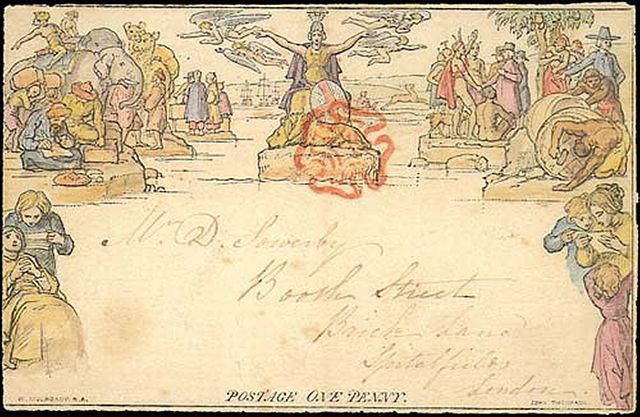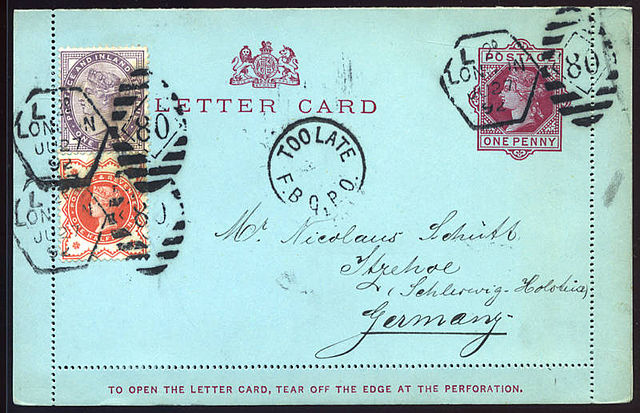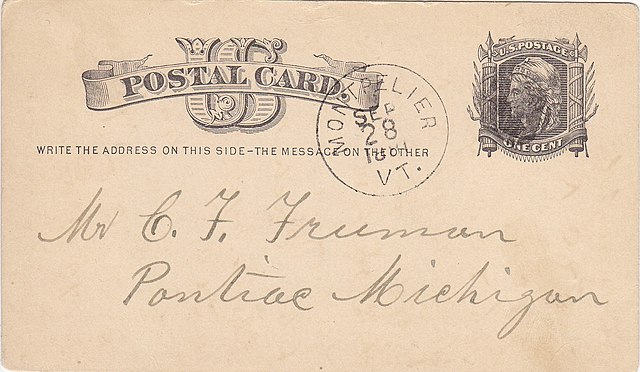Mulready stationery describes the postal stationery letter sheets and envelopes that were introduced as part of the British Post Office postal reforms of 1840. They went on sale on 1 May 1840, and were valid for use from 6 May. The Mulready name arises from the fact that William Mulready, a well-known artist of the time, was commissioned to illustrate the part of the letter sheets and envelopes which corresponded with the face area.
The one penny Mulready stationery issued in 1840, hand coloured
The 2 pence Mulready stationery issued in 1840
A piece of postal stationery is a stationery item, such as a stamped envelope, letter sheet, postal card, lettercard, aerogram or wrapper, with an imprinted stamp or inscription indicating that a specific rate of postage or related service has been prepaid. It does not, however, include any postcard without a pre-printed stamp, and it is different from freepost for preprinted cards issued by businesses. In general, postal stationery is handled similarly to postage stamps; sold from post offices either at the face value of the printed postage or, more likely, with a surcharge to cover the additional cost of the stationery. It can take the form of an official mail issue produced only for the use of government departments.
UK letter card of 1892 with an imprinted stamp and perforations.
U.S. postal card of 1881 with an imprinted stamp.
A Bavarian postal card of 1895 with an imprinted stamp.
Cuban postal card of 1878.






